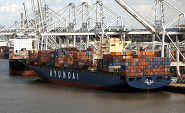Economy

January 2018 at a Glance
Written by Brett Linton
February 1, 2018
Industry data through the end January, including drivers of steel prices, supply and demand, are all pointing up as the year got off to a strong start. As the month ended, the Steel Market Update (SMU) Price Momentum indicator was pointing to higher flat rolled steel prices over the next 30 to 60 days as the domestic steel mills continue to raise prices.
Our SMU Steel Buyers Sentiment Index jumped during the month of January and reached an all-time high at +78. Future Sentiment also rose to an all-time high of +77. Based on a three-month moving average, our Buyers Sentiment Index ended the month at +71.33.
Benchmark hot rolled ended the month at $715 per ton and for the entire month averaged $685 per ton. Our average was slightly higher than the CME HRC Futures settlement price, which was $677 per ton. We were slightly lower than Platts, which averaged $687 for the month of December.
Zinc and aluminum spot prices on the LME continue to trade at historically high levels (over the past five years).
Many of the data items shown below are optimistic and represent a good start to 2018.

Brett Linton
Read more from Brett LintonLatest in Economy

Architecture billings continue to slide in March
Architecture firms said billings continued to decline in March, according to the latest Architecture Billings Index (ABI) released by the American Institute of Architects (AIA) and Deltek.

Beige Book shows concerns about trade policy
Manufacturing was mixed, but two-thirds of districts said activity was little changed or had declined.

New York state manufacturing index drops again in April
Firms were pessimistic, with the future general business conditions index falling to its second lowest reading in the more than 20-year history of the survey

Construction adds 13,000 jobs in March
The construction sector added 13,000 jobs, seasonally adjusted, in March, but tariffs could undermine the industry.

Supply chains, end-users brace for impact from tariffs
Supply chains are working through what the tariffs mean for them

